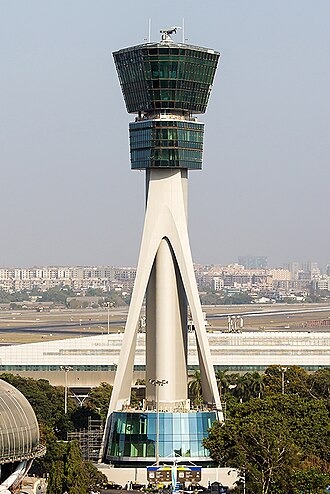Understanding Air Traffic Control (ATC): The Guardians of the Sky
November 05,2025

When you look up and see airplanes moving smoothly across the sky, it might seem effortless — but behind every take-off, landing, and flight path is the invisible guidance of Air Traffic Control (ATC).
ATC is a crucial service operated by ground-based air traffic controllers who manage and direct aircraft both on the ground and in controlled airspace. Their primary mission?
👉 To prevent collisions, organize and expedite air traffic, and support pilots with vital information for a safe and efficient journey.
🛫 What Does Air Traffic Control Do?
Air traffic controllers monitor the position of aircraft using advanced radar systems and maintain constant communication with pilots via radio frequencies.
Their responsibilities include:
Ensuring safe separation between aircraft by maintaining the required minimum distances.
Managing take-offs, landings, and taxi movements at airports.
Providing weather updates, alternate routes, and traffic information to pilots.
Assisting in emergencies by offering immediate instructions or clearances.
ATC services apply to all types of flights — commercial, private, and military.
Depending on the situation and airspace classification, controllers may issue mandatory instructions or advisory information to pilots.
Although pilots must follow ATC instructions, the Pilot-in-Command (PIC) always holds ultimate authority over the safety of the aircraft and may deviate from ATC directions in an emergency.
🌦️ The Impact of Weather on ATC Operations
Weather plays a major role in how controllers manage air traffic. Thunderstorms, strong winds, or reduced visibility can cause delays, rerouting, or even diversions.
ATC must continuously monitor these changes and coordinate alternative flight paths to ensure passenger safety.
🗣️ The Language of the Sky: Aviation English
According to the International Civil Aviation Organization (ICAO), all ATC operations are conducted either in English or in the local language used by the ground station.
In international or mixed traffic, English is the standard.
This global uniformity in communication helps prevent misunderstandings and maintains safety across borders.
🏢 Airport Control Tower: The Eyes on the Ground
The airport control tower — often a tall, glass-encased structure — serves as the command center for managing airport traffic.
Controllers stationed here handle aircraft movements within 5 to 10 nautical miles of the airport and oversee:
Take-offs and landings
Taxiway and runway operations
Vehicle movements on the apron
The job demands precision, concentration, and the ability to stay calm under pressure. Studies show that air traffic controllers experience higher stress levels than many other professions due to the critical and time-sensitive nature of their work.
🌍 Remote and Virtual Towers (RVT)
Modern technology has introduced Remote and Virtual Towers, allowing air traffic controllers to manage airport operations from a distant location using high-definition cameras, sensors, and real-time data.
This innovation is especially useful for smaller or remote airports, improving safety and efficiency while reducing costs.
🚦 Types of Air Traffic Control Positions
 Ground Control (GMC):
Ground Control (GMC):
Manages all movements on airport surfaces, including taxiways and aprons. Some airports use Surface Movement Radar (SMR) for better visibility in low-light or foggy conditions. Air Control (Tower Control):
Air Control (Tower Control):
Handles aircraft on active runways — authorizing take-offs, landings, and runway crossings. Clearance Delivery:
Clearance Delivery:
Provides departure route clearances before aircraft begin taxiing. These contain vital information about the flight path, altitude, and communication frequencies. Area Control Centre (ACC):
Area Control Centre (ACC):
Responsible for en-route operations — aircraft flying at higher altitudes between airports.
Each ACC monitors a designated Flight Information Region (FIR) and coordinates with other centers to ensure smooth transitions between airspaces.
📡 Radar Coverage in ATC
Radar systems form the backbone of ATC operations. They track aircraft and provide accurate position data. Common types include:
En-route Radar: Covers up to 240 nautical miles for high-altitude traffic.
Airport Surveillance Radar: Monitors aircraft up to 52 nautical miles from the airport.
Surface Movement Radar (SMR): Covers the airport ground area (within 2 nautical miles).
Secondary Surveillance Radar (SSR): Provides enhanced aircraft identification and altitude data within line-of-sight.
🧭 Why ATC Matters
Without air traffic control, the skies would be chaotic and unsafe. Controllers ensure that every aircraft — from small private planes to massive commercial jets — operates within strict safety margins.
They are, in every sense, the unsung heroes of aviation, guiding pilots and protecting millions of passengers every single day.
🛩️ In Summary
Air Traffic Control is not just about managing planes — it’s about managing lives, precision, and trust.
For aviation students, understanding ATC operations is essential to grasp how global airspace functions safely and efficiently. Whether you dream of being a pilot, cabin crew, or airport manager, learning about ATC gives you a deeper respect for the teamwork that keeps aviation running smoothly.